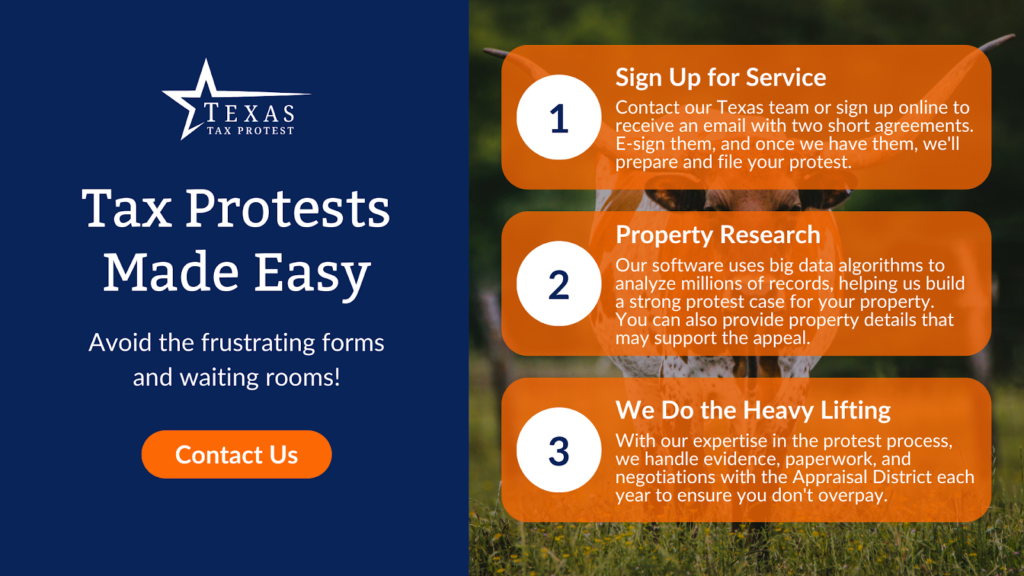
The True Cost Of Homeownership: It’s More Than Just Your Mortgage
June 7, 2025
Key Takeaways
- Upfront Costs: The down payment is only one piece of the initial cost puzzle. Closing costs, prepaid taxes, and lender fees can add thousands to your initial expenses, especially in high-demand Texas markets.
- Ongoing Expenses and Maintenance: Monthly housing costs include property taxes, insurance, and routine upkeep. Setting aside 1% to 4% of your home’s value for annual maintenance can help cover repairs and prevent larger issues down the road.
- Property Taxes and Utility Bills: Rising property valuations and seasonal utility spikes can catch homeowners off guard. Reviewing comps, documenting upgrades, and tracking usage helps you prepare for these variable costs.
Homeownership is a dream that comes wrapped in glossy brochures and heartfelt promises: your slice of Texas, white-picket-fence security, and an investment in your future. But peeling back the layers reveals realities that catch many buyers by surprise. The monthly mortgage often gets the most attention, yet for Texans, that’s only the starting point. At Texas Tax Protest, we know that hidden beneath those familiar payments are a host of expenses that can reshape your household budget.
Many homeowners feel that pang after opening a property tax assessment or notice of unexplained changes in their mortgage bills. That’s why exploring the real costs can help you plan more confidently and uncover opportunities to reduce long-term financial pressure. Here’s what to keep in mind as you evaluate the true cost of owning a home in Texas.
What Homeownership Costs Upfront
Moving from renting to owning can feel like finally landing on steady ground, but the early stages of homeownership come with some steep financial hurdles. From initial down payments to closing costs, these upfront expenses shape your overall budget long before your first mortgage payment is due.
Housing affordability has shifted significantly in recent years. Between 2000 and 2020, median rents grew faster than median household income in 88% of U.S. counties, covering areas where 97% of the population lives, according to the U.S. Department of the Treasury. That means homeownership is more expensive for today’s buyers, even before long-term expenses like property taxes and maintenance come into play.
Breaking Down Your Upfront Costs
The journey often begins with a down payment. In Texas, buyers typically put down between 3% and 20% of the home’s purchase price, depending on loan type and credit history. Then come the closing costs, fees that appear just as the finish line comes into view. These usually range from 2% to 5% of the purchase price and may include:
- Loan origination fees: Charges for processing your mortgage application.
- Appraisal fees: Payment for a licensed appraiser to assess your home’s market value.
- Title search and insurance: Protects you and your lender against disputes tied to past ownership records.
- Prepaid taxes and insurance: Upfront costs that go into an escrow account for future property tax and insurance payments.
- Recording fees: Local government charges to officially transfer property ownership to your name.
Depending on your home’s price and location, these upfront costs could range anywhere from $7,000 to $17,500 or more. Factoring them into your early budget can help set more realistic expectations and reduce surprises when you’re already stretched thin by moving expenses.
Why Homeowners’ Insurance Matters In Texas
Homeownership means protecting one of your biggest financial commitments. Most lenders require homeowners insurance, and for good reason. Policies safeguard your home from disasters, theft, and accidents, giving you peace of mind through life’s unexpected moments. Beyond meeting loan requirements, insurance helps keep your long-term investment intact during unpredictable moments.
What Influences Your Premiums
Homeowners’ insurance costs vary based on several factors. Older homes, outdated systems, and higher-risk locations often come with steeper premiums. For example, a roof nearing the end of its lifespan may increase annual rates, while recent upgrades to your electrical or plumbing systems could lead to discounts. Homes in areas prone to flooding or hailstorms typically face higher premiums, and some policies exclude flood protection altogether. However, in those cases, a separate flood policy may be required.
What’s Included And What’s Not
Standard policies generally cover structural damage, personal property loss, and liability protection. However, certain types of natural disasters or high-value belongings may fall outside standard coverage. Reviewing what’s included helps you avoid gaps that could cost thousands later.
Deductibles also affect your bottom line. For example, a lower deductible means higher monthly premiums, while a higher deductible reduces those premiums but increases your out-of-pocket risk. Estimating your home’s replacement value accurately and insuring accordingly can help you avoid coming up short during a major claim.
How To Keep Insurance Costs In Check
Insurance isn’t a one-time decision. Bundling your home and auto policies might lead to discounts, and periodically comparing quotes gives you a clearer picture of your options. In areas with volatile weather, annual policy reviews can help you stay prepared for new risks without overpaying. Treating homeowners’ insurance as a core part of your monthly housing budget, not an afterthought, gives you more control over future expenses.
How Property Taxes Can Shift Your Monthly Budget
Property taxes rank among the most substantial recurring costs tied to homeownership in Texas. These annual bills can rise or fall each year based on changing tax rates and shifts in your home’s appraised value. Even after paying off a mortgage, property taxes remain an ongoing obligation that can reshape your financial outlook over time.
Local appraisal districts are responsible for assigning market values to residential properties. These valuations are based on comparable sales, or “comps,” from nearby homes with similar characteristics. Appraisers make adjustments for differences like square footage, renovation history, lot size, and location within a neighborhood.
Once your adjusted value is finalized, local taxing entities apply their rates. From there, that rate, multiplied by your property’s assessed value, determines what you owe. Since both the valuation and the rate can shift from year to year, property taxes often change without much warning.
How Texas Tax Protest Can Help
If your property tax bill feels out of line with your home’s actual condition or value, our team at Texas Tax Protest can help review your assessment and challenge it where appropriate. We analyze comps using detailed mathematical adjustments that account for renovations, depreciation, and other factors that influence fair valuation.
For example, if your appraisal includes a 2,400-square-foot home with a new roof as a comp, but your property has an aging roof and less square footage, we can make adjustments that reflect those differences. That way, you’re being compared to homes that truly match your own.

Why Maintenance And Repairs Belong In Your Budget
Budgeting for a home doesn’t stop after the keys are in hand. Routine upkeep and emergency repairs are essential parts of homeownership, and they often reveal the true cost of maintaining your property long after move-in day. Planning for these expenses now can help prevent last-minute surprises and give you more financial control throughout the year.
Ongoing Maintenance That Keeps Your Home Running
Some tasks fall under preventive care. These jobs help extend the life of your home’s systems and avoid more costly repairs later. Common examples include:
- HVAC servicing before summer to avoid breakdowns during triple-digit heat
- Window and door resealing to prevent drafts and energy waste
- Gutter cleanings that protect foundations and prevent water damage
- Yard maintenance and fence repairs that preserve curb appeal and structural integrity
Many professionals recommend setting aside 1% to 4% of your home’s value each year to cover these kinds of maintenance tasks. For a $300,000 home, could range from $3,000 to $12,000 annually. Depending on your home’s age, climate, and features, staying ahead of these small projects can help keep your long-term costs in check.
Unexpected Repairs That Hit Your Wallet
Even with regular care, surprise issues still pop up. A failing water heater, roof damage after a storm, or foundation shifts caused by Texas droughts can appear suddenly and require immediate attention. These repairs are often more expensive and disruptive.
Preparing for emergencies starts with building a reserve fund. That way, when repairs are needed, you’re less likely to lean on high-interest credit or delay necessary fixes. Keeping documentation of completed repairs can also help when it’s time to evaluate your home’s market value.

The True Cost Of Utilities Depends On Where You Live
Homeownership comes with a lot of freedom, but it also brings regular surprises—many of them hiding in your mailbox each month. Utility bills are a perfect example. Electricity, water, gas, garbage collection, and even internet service. These recurring expenses can easily be overlooked when daydreaming about your new place, but over time, they add up and can pack a real punch to your monthly budget.
Breaking Down Common Utility Costs
Electricity is often the biggest monthly expense for Texas homeowners. High summer temperatures drive up usage, especially from June through September. Homes with poor insulation, older windows, or inefficient air conditioning units tend to see the sharpest increases. Upgrades like a smart thermostat or sealed window frames can help stabilize costs throughout the season.
Water bills can vary widely depending on how the home is used. Outdoor irrigation, pool systems, and landscaping needs may double or even triple your base usage. A homeowner in Texas might pay $55 for 5,000 gallons of water, while someone in Wisconsin could pay closer to $25 for the same volume. These differences are driven by local infrastructure, climate, and municipal pricing.
Natural gas is another recurring cost as it fuels heating systems, water heaters, and stovetops. Prices can shift depending on the time of year and the age or efficiency of your appliances. Some homes rely on gas consistently throughout the year, which adds to the long-term total.
Additionally, trash, recycling, and sewer charges often appear as flat-rate fees. These may be bundled into city services or included with HOA dues, but they still affect your overall monthly costs. Internet and cable, once considered optional, have become essential for work, school, and entertainment.
How To Make Utility Costs More Predictable
One approach to managing utility expenses is to compare your usage to similar homes in your area. This mirrors how appraisal districts use comps to assess property value. For example, if your home and a nearby one are similar in size and layout, but your energy bills are consistently higher, the gap could point to an insulation issue or an outdated HVAC system. Overall, these improvements also make your home more competitive when compared to similar properties.

Final Thoughts
Owning a home in Texas means making a long-term commitment that goes beyond your mortgage payment. Property taxes, insurance, maintenance, and surprise expenses all add up, quietly shaping the true cost of home ownership. Relying solely on mortgage calculators or guesswork can lead to surprises when tax assessments roll in.
Our team at Texas Tax Protest is here to help you take that next step. We analyze your property with precision, apply strategic adjustments, and advocate for assessments that reflect your home’s true value. When you’re ready to challenge inflated tax bills, we’ll be ready to stand with you.
Read more:
- Texas Property Tax Rates Explained: What Every Homeowner Should Know
- Nueces County Property Taxes: A Guide to Protesting and Reducing Your Bill
- Texas Disaster Declarations and How They Impact Your Property Taxes
Frequently Asked Questions: The True Cost Of Homeownership In Texas
How much should I budget for property taxes when buying a home?
Property taxes in Texas are a huge piece of your monthly housing costs, much more than just your mortgage payment. Rates can vary dramatically depending on your city, county, school district, and even neighborhood. As a general rule, most homeowners should anticipate property taxes ranging from 1.5% to 3% of their home’s assessed value each year.
What are the common maintenance costs for homeowners?
Regular maintenance keeps your home in good shape and helps you catch minor problems before they become budget-busting repairs. Costs vary, but a common rule-of-thumb is to set aside 1% to 2% of your home’s value annually for maintenance.
What are closing costs, and how do they affect my home purchase?
Closing costs are the fees and expenses paid to finalize your home purchase and transfer ownership. In Texas, these typically range from about 2% to 5% of your loan amount. They include lender fees, title insurance, prepaid taxes, government filing fees, and sometimes even a portion of your annual property taxes.
How do renovation and repair costs impact homeownership?
Renovations add value and comfort but can also escalate your total investment. Whether you’re updating a kitchen or repairing old plumbing, costs can range from a few hundred to thousands of dollars. Significant updates might also increase your property’s assessed value, potentially raising your property taxes the following year. Before starting big projects, consider consulting with tax professionals who can walk you through how changes may affect your tax bills.
Can utility costs significantly affect my overall home expenses?
Yes! The summer heat can send electricity bills soaring, and water usage is closely monitored in many areas. Factors like an older HVAC unit, single-pane windows, or outdated insulation can result in higher ongoing costs. Smart upgrades, like energy-efficient appliances or solar panels, may trim your bills over time.
What is private mortgage insurance, and when is it necessary?
Private Mortgage Insurance (PMI) typically comes into play when your down payment is less than 20% of the home’s purchase price. Lenders require it to protect themselves if you default on the loan. PMI can add $100 or more to your monthly payment until you’ve built up enough equity. If you’re looking to avoid PMI, consider saving up for a larger down payment or exploring certain loan programs.
Are there any tax benefits or deductions for homeowners?
Owning a home in Texas can unlock several tax benefits. You might qualify for the homestead exemption, which reduces your taxable value, or additional exemptions for seniors, veterans, or people with disabilities. Mortgage interest and property tax payments may also be deductible on your federal returns.
Source:
- https://home.treasury.gov/news/featured-stories/rent-house-prices-and-demographics





